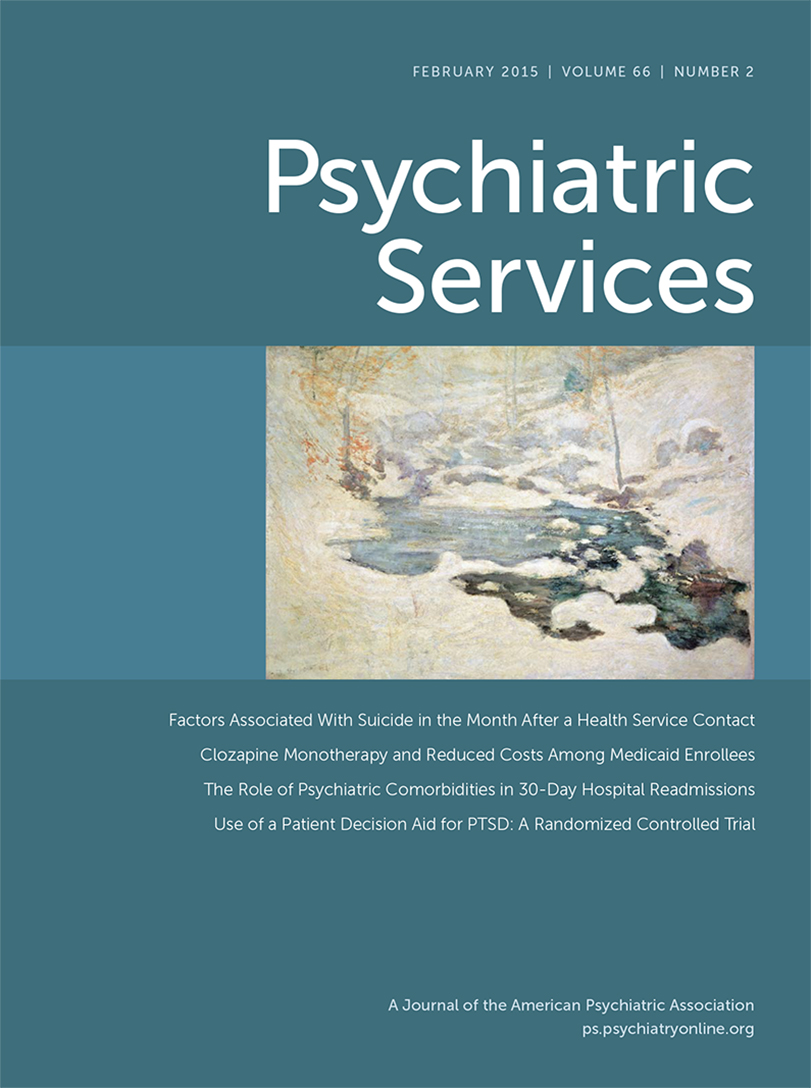Factors Associated With Suicide in the Month Following Contact With Different Types of Health Services in Quebec
Abstract
Objective:
The aim of the study was to identify factors associated with suicide death occurring in the month following an outpatient visit, emergency room contact, or hospitalization.
Methods:
The results of this study are based on data for 8,851 individuals ages 11 years and older who died between January 1, 2000, and December 15, 2007, and whose death was confirmed as suicide by the coroner’s office in Quebec, Canada. Health service use in the year prior to death was assessed by review of data from the province’s public health insurance agency. Multivariate logistic regression models were used to assess the association of clinical and sociodemographic factors and the occurrence of suicide death in the month following versus more than one month after the last use of health services.
Results:
A total of 81.6% of suicide decedents had consulted on an outpatient basis, 48.7% had visited an emergency department, and 28.5% were hospitalized in the year prior to death. Among individuals who had been discharged from an emergency department or a hospital closest to their death, 29.5% and 75.3%, respectively, died in the month following discharge. The most consistent modifiable factor associated with death in the month following last contact was number of outpatient consultations following discharge.
Conclusions:
Ensuring follow-up care after an emergency department visit or hospitalization may be associated with a longer period between discharge and suicide, allowing for more time to intervene and, possibly, prevent suicide.



